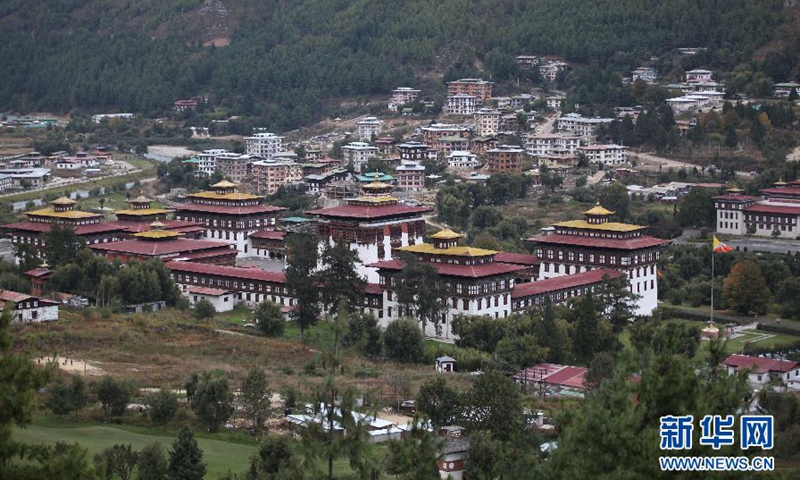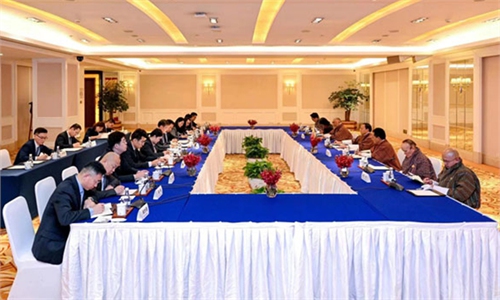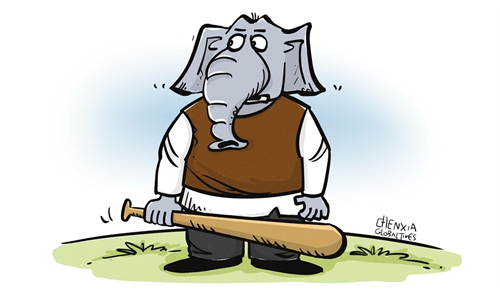India's obstruction main obstacle to solving China-Bhutan border disputes: experts

The Kingdom of Bhutan Photo:Xinhua
China and Bhutan hopefully will settle their border disputes in a few rounds of talks, Bhutanese Prime Minister Lotay Tshering has revealed. Chinese experts embraced the progress and noted that the border disputes between the two countries are very minor, but they have not been formally demarcated because of India's obstruction.
Bhutan hopes to complete the demarcation of territories with China with "one or two meetings," said Tshering, indicating a resolution of boundary issues with Beijing could be expected soon, The Hindu reported Wednesday.
Tshering made the remarks during an interview with Belgian newspaper La Libre during a recent visit to Brussels. "We do not encounter major border problems with China, but certain territories are not yet demarcated. We still have to discuss it and draw a line," he told the newspaper.
The border between China and Bhutan spans a length of more than 600 kilometers. Disputed areas are mainly located on the western and northern parts of the border, covering about 5,000 square kilometers, according to Zhang Yongpan, a research fellow of the Institute of Chinese Borderland Studies of the Chinese Academy of Social Sciences.
Boundary negotiations started in 1984 and lasted for nearly 40 years before the two signed a memorandum of understanding on a Three-Step Roadmap in 2021.
During signing of the MoU, Assistant Minister of Foreign Affairs of China Wu Jianghao said the traditional friendship between the two peoples goes back to ancient times. It is expected that the MoU will make a meaningful contribution to speed up the negotiation on demarcation and promote the process of establishing diplomatic ties between the two countries.
Disputes remain in five border areas, mainly concerning some counties in Southwest China's Xizang Autonomous Region like Yadong, Kangmar and Lhozhag, Zhang told the Global Times on Thursday.
The border issue between China and Bhutan is a problem inherited from the past. From ancient China to modern China, the two countries never formalized any treaty to delimit their border but relied on a natural boundary, according to Zhang.
The issue grew complex in modern times due to the intrusion of British India to Bhutan, Zhang explained. After the establishment of the People's Republic of China in 1949, China and Bhutan still had not set up diplomatic ties due to India's disruption, making it difficult for the two sides to settle border disputes, Zhang noted.
The latest progress revealed by Bhutan's prime minister indicates that Bhutan has realized that it should seek resolution to disputes with China via negotiations. Unilaterally stirring up confrontations like India in disputed areas will not work, Zhang said.
Bhutan has closer ties with China than with India in terms of not only culture and religion, but also history. The construction of the China-proposed Belt and Road Initiative is also beneficial to Bhutan's development. Bhutan has seen this clearly via the example of the China-Nepal railway project, experts noted.
The Kingdom of Bhutan is located on the southern slopes of the eastern Himalayas and situated between China and India. It has maintained close political, economic, cultural and religious ties with Xizang for a long time throughout history.
In the middle- and late-18th century, Britain began to invade Bhutan. From the end of the 19th century to the beginning of the 20th century, Britain forced Bhutan to sign a series of unequal treaties, bringing Bhutan under the "protection" of Britain, which gradually disintegrated the suzerain-vassal relationship between Xizang of China and Bhutan.
After independence, India insisted on inheriting the colonial legacy of the British Empire and established an unequal "special relationship" with Bhutan, controlling Bhutan's national defense and economy, while interfering in Bhutan's internal affairs and foreign affairs by various means.
The border disputes between China and Bhutan are very minor, but they have not been formally demarcated because of India's obstruction, experts noted.
For years, some Indian media have been hyping China building villages within Bhutan's territory.
In the same interview, Tshering refuted these reports, stressing that the reported Chinese facilities are not in Bhutan and, categorically, there is no intrusion of China into Bhutan as mentioned in the media.
Tshering also touched upon the dispute over the Dong Lang area (Doklam), where Chinese and Indian troops faced off in 2017. He said of Doklam that "It is not up to Bhutan alone to solve the problem.
"There are three of us. There is no big or small country, there are three equal countries, each counting for a third."
Some Indian media expressed concerns over the remarks as they thought they might mean that Thimphu is veering toward the Chinese side on the "Doklam disputes" and this could be a problem for India's security.
In response, Zhang pointed out that Doklam is totally located within China's territory and has nothing to do with India.
This fact has been clearly stipulated by the Convention between Great Britain and China Relating to Sikkim and Tibet signed by China and the UK in the late Qing dynasty (1644-1911) that has been legally enforced. India has no right to speak a word or claim sovereignty of the area, Zhang noted.
While China and Bhutan steadily make progress in their border negotiations, India's army chief is trying to muddle the waters of China and India's border dispute by hyping the influence of worsening China-US ties.
As ties between Washington and Beijing worsen, border tensions between India and China could spiral into a bigger conflict, India's General Manoj Pande warned.
It is an old trick of India to make things more complicated, saying some place is disputes when there is no disputes at all in that place, in order to broaden the scope of the disputes and increase the difficulty to resolve the disputes. Their aim is to create more chips for India to push China to step back in the border issue. But will this work? The "Doklam standoff" six years ago has give us the answer, observers said.



